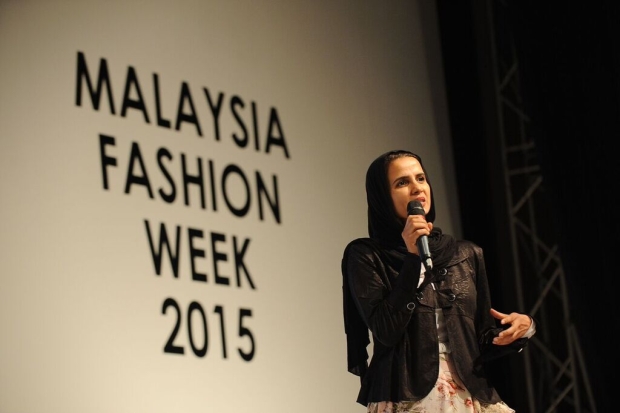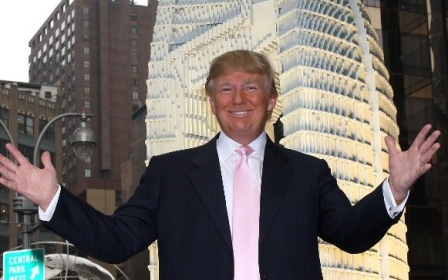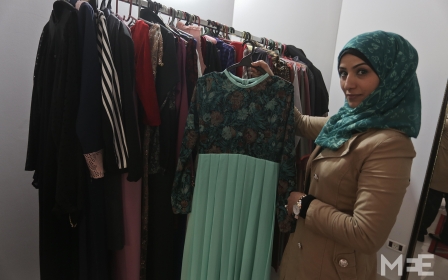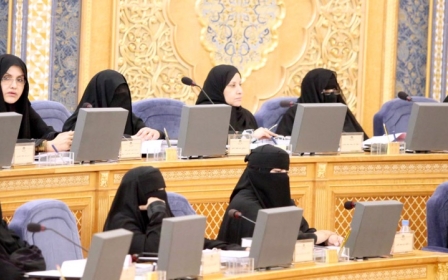Alia Khan: Pioneering the Islamic fashion revolution

DUBAI, United Arab Emirates - Alia Khan is a pioneer and founder of the Islamic Fashion Design Council (IFDC). When she isn’t setting up new offices around the world, she is speaking at major fashion events or consulting for retailers and designers who are aiming to enter the lucrative arena of Islamic fashion.
Khan spent her formative years in both California and Canada and, when her father retired, the family relocated to Dubai. After studying Islamic Sciences in Jordan, she embarked on philanthropic work in Pakistan, the homeland of her parents.
When her sabbatical came to an end, she realised that she had to return to paid employment if she was going to continue her charity work. "Fashion has always been a passion of mine," says Khan. Her solution was to launch a fashion line. "There was this edge I wanted and I felt the world needed more fashionable Islamic attire for women like me."
But when Khan began to research the Islamic fashion market she could not find a body that represented the industry. "For ready-wear or couture there were councils you could go to for advice and the latest research, but for Islamic fashion there was no such thing. So more than a fashion line, there needed to be a council."
It was 2012 and Dubai was emerging as a global economic player. Khan approached the Dubai government and with their support, she set up IFDC.
Money talks
With the Islamic clothing industry expected to be worth an estimated $488 billion by 2019, the market is waking up to the potential and it is starting to react accordingly. The Italian powerhouse, D&G, launched its Autumn/Winter Abaya Collection and H&M have seen the introduction of their first Muslimah model.
Khan is positive about the entry of designers such as D&G. "They have built a remarkable brand and I acknowledge their achievement in the fashion world. It is a refreshing thing to see someone that has created something beautiful for Muslim women."
However, they have received a mixed reception. D&G launched their collection "during the holy month of Ramadan, resulting in the absence of many Middle Eastern guests".
The timing of the launch was an example of how Western brands can often miss the nuances of this consumer. Khan reinforces the need for proper consultation before targeting this consumer group. "Sometimes that due diligence does not seem to come through. Islamic fashion is very different from mainstream fashion. Muslim women are not your average consumer. The formula is different. She loves her individuality; she doesn’t follow trends or conform to the language of 'in or out' of season. It isn’t in our current makeup. I think that is a lovely part of our identity."
IFDC’s research-based approach intends to develop more data mining techniques and they are taking some unique steps to do something unprecedented in the field of research and data gathering. "That is where IFDC have made their niche. The Muslim woman consumer is extremely valuable to everyone in the fashion space so all retailers should be thinking of how to please this demographic. All designers should be thinking of this consumer before they build their next collection."
However, despite the market size, there are other hesitations and you can hardly blame brands for being nervous about targeting Muslim consumers. "We aren’t the cool kids right now," says Khan, which is why she celebrates the exposure that big brands give to Islamic fashion simply by introducing collections aimed at the Muslim consumer.
Islamic values and inclusivity
With the input IFDC is having in "rebranding and reimaging Islam", Khan believes an Islamic fashion identity could stretch further and have a positive effect against the rise of Islamophobia. With the top fashion houses entering the Islamic fashion industry, it seems that more diverse images of Muslim women are beginning to filter into the mainstream - although forcing that isn’t something Khan is concerned about.
"It is happening naturally," she says. "When I speak at events or conferences, like recently in Italy, I had people coming up to me saying, ‘You have changed our impression of the Muslim woman. We didn’t know that identity existed.' That sparked a healthy discussion and that is happening a lot more."
With a handbook and code of conduct based upon IFDC’s Islamic values, the council strives for inclusivity. "IFDC has been approached by non-Muslims who have seen the value of what we are doing. It behooves us to bring them in and use the expertise we each have." They have designers and consultants from every aspect of the fashion industry. "How else will we learn in this young industry?" says Khan.
Khan’s attitude seems to be completely aligned with her faith. The Islamic element is as important as the fashion element for Khan. "This is an incredibly beautiful and progressive religion of building, not destroying, of kindness and compassion. I dream of an industry where everyone is supportive and loving. I know this sounds idealistic but I’d like to find a way in which the fashion industry doesn’t have to be so cut-throat."
For her, fashion forms an identity, one that speaks its own language and one that can translate across borders and break down barriers.
Shireen Ahmed, who discusses ethical fashion, adds: “It's a huge part of Islamic identity to not oppress others and the manufacturing sector is notorious for mistreatment of tailors, seamstresses and other workers.” Khan’s opinion on this is a supportive one: "We are getting a lot more proactive in this space for sustainable and ethical fashion; we can’t be Islamic fashion without factoring in the ethics of this.”
Islamic or modest fashion
Within the parameters of modest and Islamic fashion, both terms are used in the fashion industry when describing attire designed to not reveal or emphasise a person's figure.
However, Sobia Ali Khan, writer for Muslimah Media watch, says, “I've always wondered about the money side of 'modest clothing'. Is a $5000 designer abaya really modest? Showing off how much money you have isn't exactly Islamic either.”
The Islamic Fashion Council has faced critics who are uncertain about the very term, "Islamic fashion". "We must value our critics," she says, "However, the definition of modest is not enough. To call it modest fashion would not cut it. Islamic fashion completely defines those parameters and those guidelines and this is an important part of the puzzle."
Khan explains that you cannot and should not mandate how an item of clothing is worn. "That decision belongs with the consumer and it isn’t something that, as a designer you can control. You may commission a scarf to be worn as hijab, only to find the consumer wears it as a sarong. We aren’t a religious council; we are a fashion council." The IFDC acts as a platform to navigate the Islamic fashion market.
When I asked Khan about which countries were leading the way with Islamic fashion, she couldn’t pin down one country or region. She loves the stylish edge of the women in Saudi, as well as the way Islam is embraced by Malaysians and Indonesians and the designs that are emerging there. She also finds the Turkish designers exciting, not to mention the growing markets in the UK, Germany, Australia, Russia and the USA. "At the beginning we discussed making it regional, but IFDC could never be regional because the global fashionistas were excited about IFDC no matter where it was set up."
A fashion revolution
One of IFDC’s major new initiatives is Pret-a-Cover™ whereby retailers provide a dedicated section of their store for Muslim women so they are more likely to find success each time they shop.
Khan tells us that "a Muslim woman’s shopping experience can take up to a week or 10 days, where our counterparts can find everything they need in the same shopping trip".
By introducing a Pret-a-Cover™ department, retailers are opening themselves up to a huge revenue stream and welcoming an audience that they may otherwise be missing. They cater for all of the shopping needs of a Muslim woman in one section of the shop - scarves, long sleeved tunics etc.
There are issues to work on, such as the positioning and working out the space in the retail store for the dedicated section, but IFDC is in talks with major department stores and retailers across the world to roll out this scheme. Khan’s passion for this initiative is obvious: "This is very exciting because it is going to change the way we shop and this is quite revolutionary."
For those wondering how the fashion industry will change, Khan reminds us that Islamic fashion isn’t a new look. It is like most fashion trends; it has gone full circle although Khan argues further that "it has never gone away".
There is a secondary market of consumer and it isn’t just Muslims who are choosing to wear the pieces. "Back in the Audrey Hepburn and Grace Kelly days the scarf was a classic and iconic look. We saw it with Princess Diana, Angelina Jolie, Jennifer Lopez; it is a staple item in every fashionista’s wardrobe which really speaks to what we have here. We have a timeless sense of style."
With IFDC offices soon to be opening in the UK and Russia, Islamic fashion is fast becoming global and it will be an exciting time to see the changes it will make to the fashion industry.
New MEE newsletter: Jerusalem Dispatch
Sign up to get the latest insights and analysis on Israel-Palestine, alongside Turkey Unpacked and other MEE newsletters
Middle East Eye delivers independent and unrivalled coverage and analysis of the Middle East, North Africa and beyond. To learn more about republishing this content and the associated fees, please fill out this form. More about MEE can be found here.






